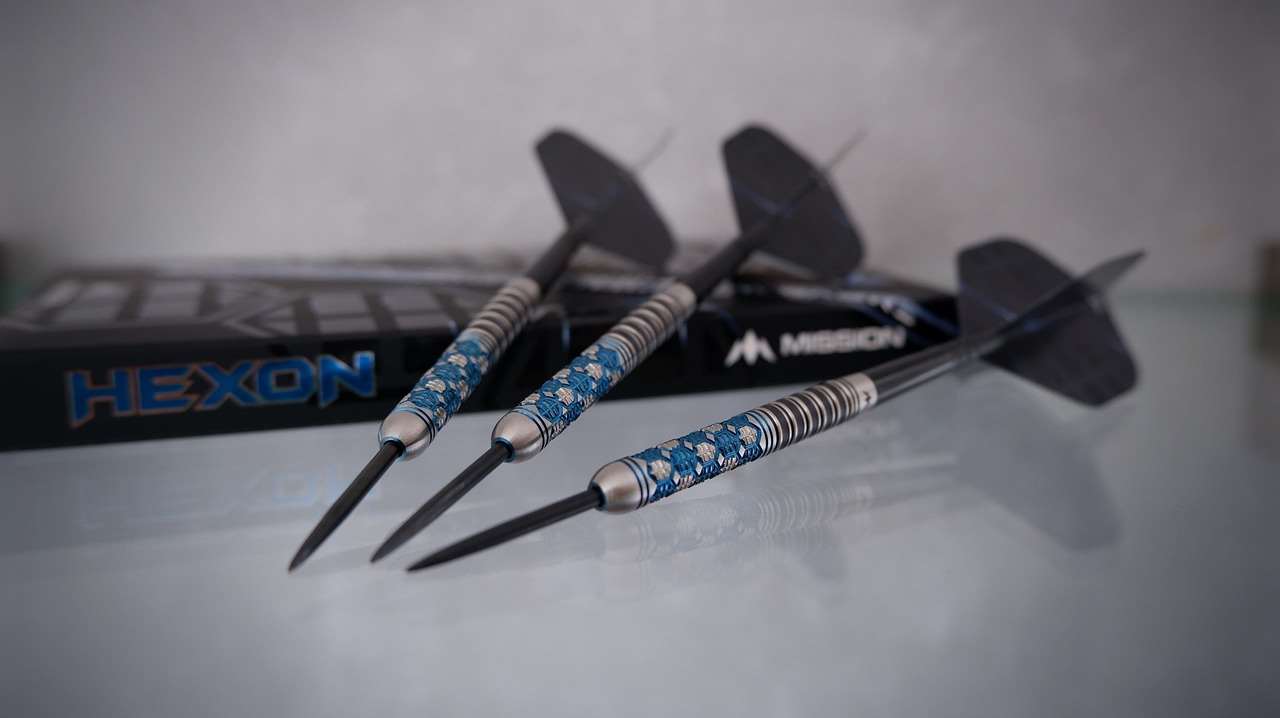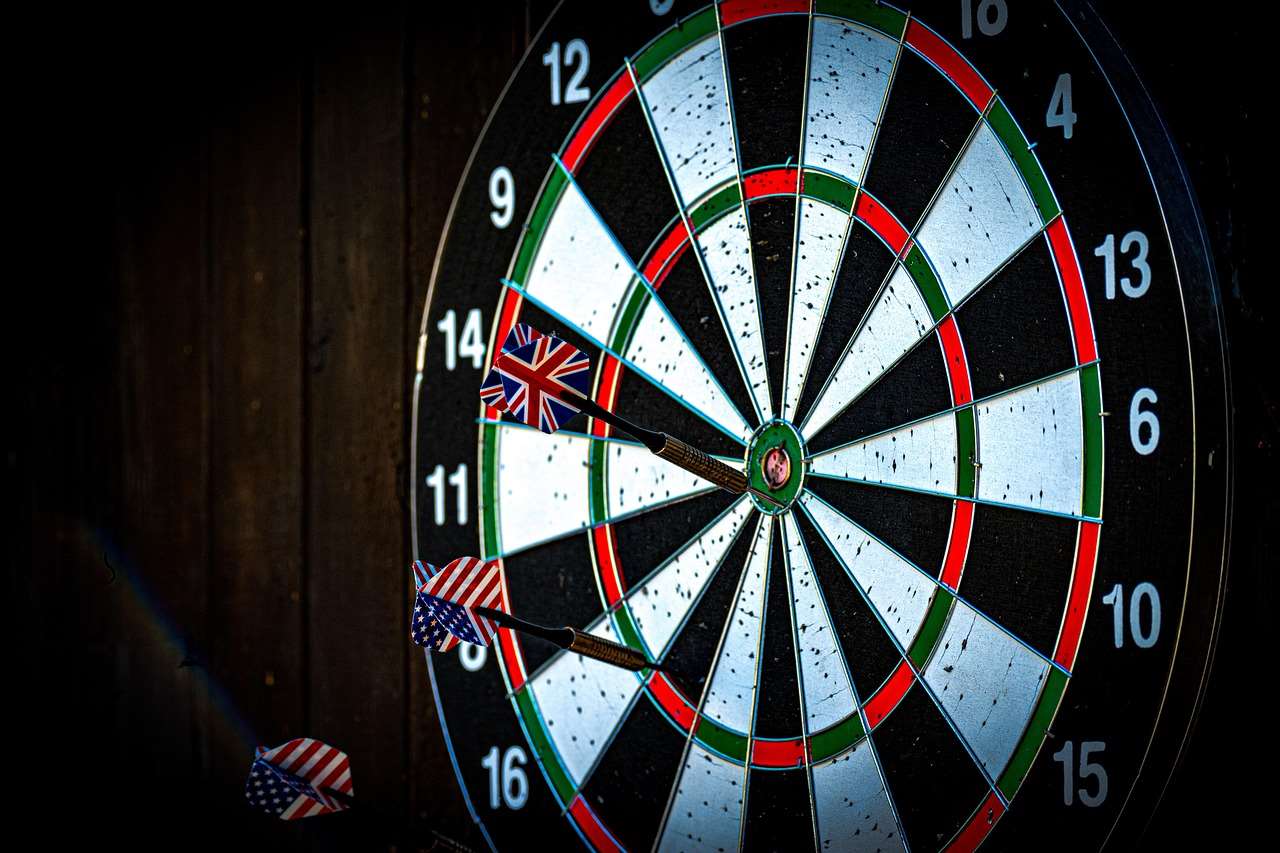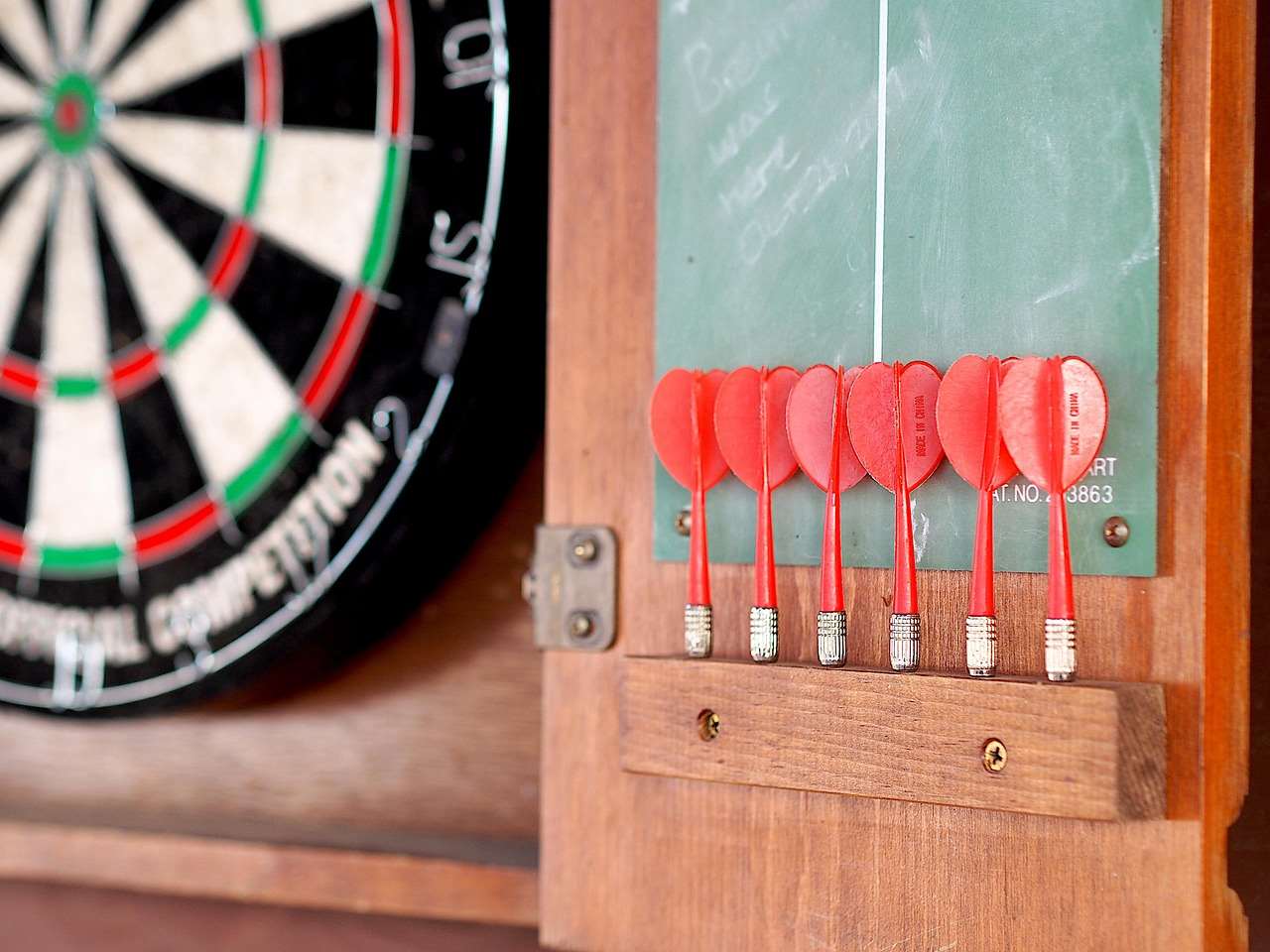So, what is a dart flight? Simply put, a dart flight is the small, fin-like structure attached to the back of a dart, crucial for its stability and flight path. This article will delve deeper into what makes a dart flight essential, exploring different types, materials, and the impact they have on your game. We’ll also cover how to choose the right flights for your darting style and offer some helpful tips for maintaining them.
⚠️ Still Using Pen & Paper (or a Chalkboard)?! ⚠️
Step into the future! The Dart Counter App handles all the scoring, suggests checkouts, and tracks your stats automatically. It's easier than you think!
Try the Smart Dart Counter App FREE!Ready for an upgrade? Click above!
Understanding the intricacies of a dart flight can significantly improve your accuracy and overall performance. Choosing the right flight is vital for achieving consistent throws and maximizing your scores. The right flight can be the difference between a near miss and a perfect bullseye. This guide will help you master this often-overlooked yet crucial aspect of the game.
What is a Dart Flight and Why is it Important?
As we’ve established, what is a dart flight? It’s the stabilizing element of your dart, profoundly influencing its trajectory. The flight’s shape and material directly affect how the dart moves through the air, combating wobble and ensuring a straight path to the board. Dart flights aren’t just for looks; they’re critical to achieving the accuracy needed to become a better dart player. Imagine a dart without a flight – it would likely tumble erratically, rendering your throws unpredictable and inaccurate.

Different flights offer varying levels of stability, depending on their shape, size, and material. Choosing the right flight involves considering your throwing style and the type of darts you use. For example, players with a strong, consistent throw might prefer smaller flights, while those with a slightly less controlled throw might benefit from larger, more stable flights. We’ll look at the different types available later on.
Types of Dart Flights
The market offers a diverse range of dart flights, each designed to cater to different playing styles and preferences. Understanding these differences is key to selecting the right flight for your needs.
Standard Dart Flights
These are the most common type of flight, often made from plastic and available in a variety of colors and shapes. Standard flights are known for their balance between stability and maneuverability, making them a good option for players of all skill levels. They represent a solid starting point for those new to the game, offering good overall performance without being overly specialized.
Shaped Dart Flights
Shaped flights, unlike standard flights, go beyond the basic shape. They might be designed with curves or cutouts to improve air resistance or to provide enhanced stability in specific wind conditions. Some shaped flights are designed to minimize the effect of slight variations in throwing technique. Experimenting with different shaped flights can help you fine-tune your game. These are frequently favored by professional players who look for that tiny edge.
Parachute Dart Flights
Parachute flights are designed with a large surface area to increase air resistance, which helps slow the dart down. This type of flight is particularly useful for players who throw with high velocity, as it helps prevent the dart from bouncing off the board unexpectedly. However, they might not be ideal for those who prefer faster-moving darts. This option is best used depending on one’s individual playing style and throwing speed.
Materials Used for Dart Flights
The material of your dart flight significantly impacts its durability, flexibility, and overall performance. Here are the most common materials:
- Plastic: The most common and affordable option. Plastic flights are generally durable and offer a good balance of stability and flexibility. However, they can sometimes be prone to damage if thrown at high velocity.
- Polypropylene: A slightly more durable and flexible option than standard plastic flights, these are known for being more resistant to tearing.
- Mylar: These are exceptionally lightweight and exceptionally thin, which aids in speed and stability. Often preferred by professionals for their superior aerodynamic properties.
Choosing the right material is about understanding your throwing style and how much wear and tear you expect your flights to withstand.

Choosing the Right Dart Flight for You
Selecting the right flight can significantly improve your dart game. Consider these factors:
- Your Throwing Style: Are you a powerful thrower? A gentler thrower? This will affect how much stability you need from your flight. Powerful throwers may benefit from more resistant flights.
- Dart Weight: Heavier darts often require more stable flights to counter their momentum.
- Playing Environment: Windy conditions may call for a more stable flight to reduce the impact of air currents.
- Personal Preference: Ultimately, some experimentation is essential. Try different shapes, sizes, and materials to discover what works best for you. There’s no one-size-fits-all solution when it comes to what is a dart flight that’s perfect for you.
Experimentation is key! Don’t be afraid to try different types of flights to see what feels and performs best for you. There are many brands and types available, so finding the perfect fit for your style should not be too difficult.
Maintaining Your Dart Flights
Proper maintenance extends the lifespan of your dart flights and ensures consistent performance. Here’s how to care for your flights:
- Inspect Regularly: Check for any tears, bends, or other damage before each playing session. Damaged flights can significantly affect your accuracy.
- Store Properly: Keep your darts in a case to prevent damage and bending.
- Replace Regularly: Even with careful handling, dart flights wear down over time. Replace them as needed, to maintain accuracy and precision.
Remember, a small investment in new flights can go a long way in improving your overall performance.
Frequently Asked Questions about Dart Flights
Here are some frequently asked questions about what is a dart flight and related topics:
What is the best material for dart flights?
There’s no single “best” material. The ideal material depends on individual playing style and preferences. Plastic offers affordability and good balance. Mylar provides superior aerodynamics, often favored by professionals. Polypropylene offers a good middle ground with increased durability.
How often should I replace my dart flights?
This depends on how frequently you play and how aggressively you throw. Inspect your flights before every session. Replace them when you notice any damage, bends, or significant wear. Preventing inaccurate throws is key to improving your game. Using a Free dart score app can help track your progress and highlight when you might be experiencing issues due to worn-out flights.
What are the most common sizes of dart flights?
Common dart flight sizes are based on their surface area, usually expressed as Standard, Medium, and Short. Experimentation helps determine which best suits your throwing style and personal preference.
Can I use different flights on different darts?
Yes, you can use different flights on different darts. In fact, experimentation with different flights on different darts is a great way to fine-tune your gameplay and find the optimal combination that suits your individual throwing style.

Remember, proper flight selection and maintenance are pivotal for optimal performance. Experimentation is key to discovering what works best for your unique throwing style and personal preferences. Don’t underestimate the impact a good flight can have on your game!
Advanced Techniques and Considerations
For more advanced players, the choice of dart flights can become a more nuanced aspect of their game. Consider these points:
Flight Shape and Aerodynamics
The shape of your flight significantly affects aerodynamics. Some shapes offer superior stability at high speeds, while others excel in reducing wobble at lower speeds. Experiment with different shapes (standard, kite, pear etc.) to find the ideal shape that fits your throwing style and speed. The angle and curve of a flight play a significant role in reducing air drag and guiding your darts. Some players swear by particular shapes for maximizing consistency and accuracy.
Flight Stiffness and Flexibility
The stiffness of a flight affects its ability to resist bending and tearing. Stiffer flights offer greater stability, particularly for high-velocity throws. Flexible flights are easier to control during release, offering benefits for players with slightly less consistent throwing styles. The ideal stiffness depends on a player’s unique preferences and the strength of their throw.
Flight Weight and Balance
Although seemingly insignificant, the weight of your flight can subtly impact the dart’s overall balance and flight characteristics. Heavier flights can add stability but may slightly slow down your dart’s speed. Lighter flights are faster but might be more vulnerable to wind conditions. Finding the right balance between stability and speed is a matter of personal preference and trial and error. Ultimately what is a dart flight that helps you maintain your balance and precision should be paramount.

By paying attention to these subtle details, advanced players can significantly refine their game and further improve their accuracy and consistency.
Conclusion
Understanding what is a dart flight and its importance is a crucial step in becoming a more skilled darts player. From selecting the right material and shape to maintaining your flights properly, this guide has outlined the key factors to consider. Remember, the perfect flight is a personal choice – one that depends on your throw, your darts, and your playing environment. Don’t be afraid to experiment and find the flight that enhances your game. By focusing on these details, you can refine your technique, improve your accuracy, and ultimately, hit more bullseyes! Now go out there and practice, and maybe try some new darts shafts while you’re at it. Remember to check your dartboard bull height too! And if you want to track your scores efficiently, don’t forget to check out the Bullseye Darts App! Perhaps it’s time to find out what’s the Omni Dartcounter price as well.

Want to learn more about improving your dart game? Check out our articles on how to stand for darts, darts stance distance, and darts masters live free for even more tips and tricks!
Hi, I’m Dieter, and I created Dartcounter (Dartcounterapp.com). My motivation wasn’t being a darts expert – quite the opposite! When I first started playing, I loved the game but found keeping accurate scores and tracking stats difficult and distracting.
I figured I couldn’t be the only one struggling with this. So, I decided to build a solution: an easy-to-use application that everyone, no matter their experience level, could use to manage scoring effortlessly.
My goal for Dartcounter was simple: let the app handle the numbers – the scoring, the averages, the stats, even checkout suggestions – so players could focus purely on their throw and enjoying the game. It began as a way to solve my own beginner’s problem, and I’m thrilled it has grown into a helpful tool for the wider darts community.